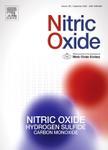版权所有:内蒙古大学图书馆 技术提供:维普资讯• 智图
内蒙古自治区呼和浩特市赛罕区大学西街235号 邮编: 010021

作者机构:Univ Calif Davis Sch Med Dept Biochem & Mol Med Sacramento CA 95817 USA Univ Calif Davis Sch Med Shriners Hosp Children Inst Pediat Regenerat Med Sacramento CA 95817 USA Univ Calif Davis Biochem Mol Cellular & Dev Biol BMCDB Grad Grp Davis CA 95616 USA
出 版 物:《BIRTH DEFECTS RESEARCH》 (Birth Defects Res.)
年 卷 期:2020年第112卷第19期
页 面:1635-1659页
核心收录:
基 金:National Institute of Dental and Craniofacial Research [R01DE021696, R01DE026737] National Institute of Neurological Disorders and Stroke [R01NS102261] Shriners Hospitals for Children
主 题:cleft lip palate DNA methylation epigenetics histone modification noncoding RNA
摘 要:Orofacial clefts (OFCs) have multiple etiologies and likely result from an interplay between genetic and environmental factors. Within the last decade, studies have implicated specific epigenetic modifications and noncoding RNAs as additional facets of OFC etiology. Altered gene expression through DNA methylation and histone modification offer novel insights into how specific genes contribute to distinct OFC subtypes. Epigenetics research has also provided further evidence that cleft lip only (CLO) is a cleft subtype with distinct etiology. Polymorphisms or misexpression of genes encoding microRNAs, as well as their targets, contribute to OFC risk. The ability to experimentally manipulate epigenetic changes and noncoding RNAs in animal models, such as zebrafish,Xenopus, mice, and rats, has offered novel insights into the mechanisms of various OFC subtypes. Although much remains to be understood, recent advancements in our understanding of OFC etiology may advise future strategies of research and preventive care.